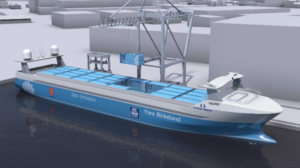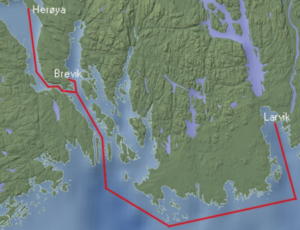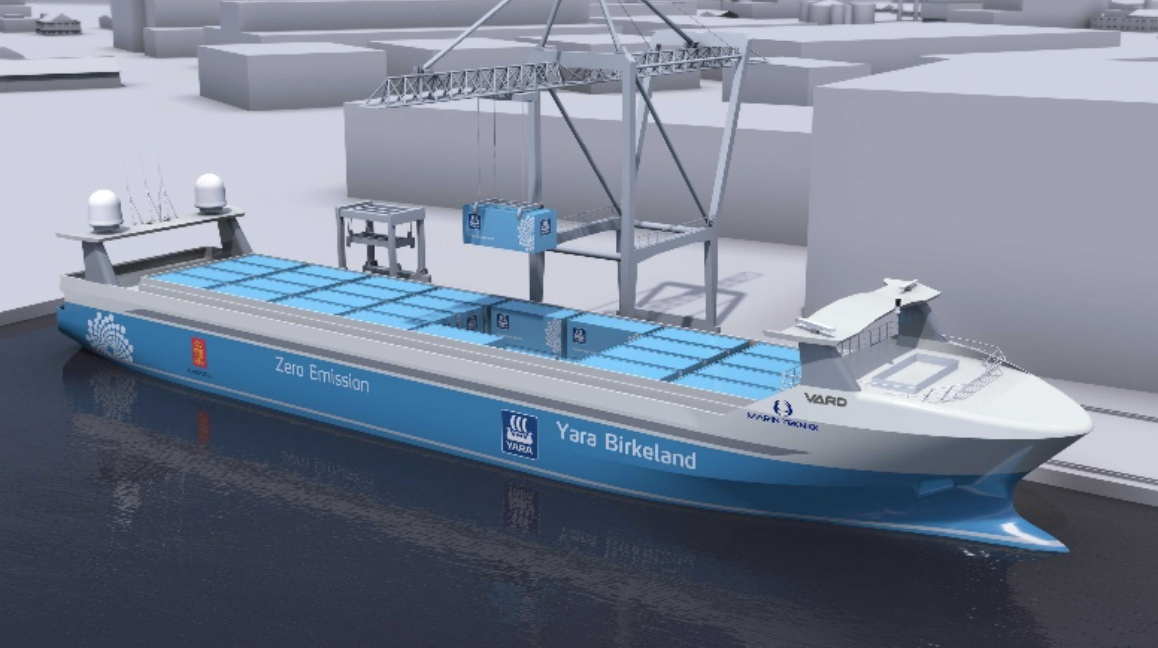Digitalization in the Shipping Industry
To give this discussion some perspective, the International Chamber of Shipping, representing the full spectrum of maritime nations and related NGOs, often reminds us that 90% of world trade is reliant on marine transportation. While much of this is largely out of the public eye, the conduct of maritime commerce earns ship owners an estimated $500 billion annually in freight rates, much of which is reinvested, of necessity, in new tonnage.
So, what do we mean by digitalization? Even a modicum of research will provide diverse opinions but in broad terms, we are describing the transition of society from the industrial age, characterized by analogue technologies to an age of knowledge and creativity characterized by digital technologies, computer-readable data and digital business innovation.
Essentially, digitalization should be a means to improve your business with the scope of available technology advances that can enable this objective.
What are the Opportunities and Challenges?
Perhaps the most appealing opportunity is the management of costs while at the same time increasing an organization’s efficiency. Digitalization is designed to improve business results and to better control trading and operational risks. Timing is obviously key as shipping companies, trading companies and ports need to be able to react to events in a timely manner.
Most would agree that the industry has changed beyond recognition in the past 50 years. Perhaps the prime example is common acceptance of containerization (after a bumpy start) but it doesn’t end there. Other examples are the closure of the Suez Canal from 1967-75 which transformed the tanker industry, similarly the emergence of multiple centres of auto manufacturing combined with a rapidly expanding middle class forcing a complete overhaul in how construction equipment, trucks and autos are moved from one side of the globe to another. The complexity of today’s fleets of specialized vessels be they cruise ships, ferries, LNG carriers, wind farm installation vessels, heavy lift carriers or offshore service craft represents an industry transformed.
Coupled to this, we cannot underestimate the emergence of the strict global regulatory environment applicable to shipping and ports with the intent of promoting improved levels of governance, safety and environmental performance. This, all at a time when the size of ships, along with the ports and terminals on which they depend is far beyond what could have been imagined 50 years ago.
Gone are the days of morse code, celestial navigation and the traditional hand-written engine room logbook. Early computers gave rise to electronic navigation and engine room data loggers along with spreadsheets detailing cargoes loaded and discharged, port productivity records etc. However, today’s reliance on computers for multiple ship and port related functions is a fact of life and computer malfunctions can literally bring a ship or a port to a standstill, much as happens in the aviation industry with all the ensuing chaos.
The sector which has really led the way in digitalization is that of the container. Here too, container availability, early bay plans and container tracking were entirely dependent on customized spreadsheets before the emergence of the early Navis terminal operating systems culminating in today’s optimal Navis N4 which is close to becoming a global standard. With some 20 million containers constantly on the move, the mind boggles as to how cargo would be tracked without Electronic Data Interchange (EDI). Often lost in all this is the fact as the primary enablers of world trade, it is digitalization coupled with the efficiency and cost-effectiveness of shipping and ports that permits commodities that would otherwise languish to be globally traded.
Another important benefit of switching documents from paper to digital forms has been increased security. The transmission of container cargo manifests to customs authorities across the world even before containers are loaded to a vessel allows for electronic pre-scanning and the odd much dreaded DNL (Do Not Load) order. Similarly, distribution by rail or by truck can only be accomplished effectively if there is coordination with the factory gate or for example, the auto distributor.
The main challenge lies arguably in the integration of multiple, often stand-alone, proprietary systems into one. A company might work with an ETRM system (Energy Trading and Risk Management) but now needs a shipping solution in place. There lies the challenge – the systems need to be capable of communication.
A Shipping Industry for the 21st Century
As the shipping industry goes about its business, there is always the risk of overlooking new digital-based solutions to old problems. For this reason, larger ports with the financial capacity are increasingly turning to small organizations or start-ups which are dedicated to digital solutions and carry less risk. Inevitably, large risk-averse corporations are reluctant to restructure their entire business to incorporate digitalization. To this end, the Port of Rotterdam describes itself as “a breeding ground for innovators and creative entrepreneurs” through its PortXL Program which it describes as “a crucial means of realizing the envisaged changes in energy transition and digitization”.
Similarly, following on from the successful completion of its first group of start-ups under its accelerator program OceanPro in March this year, Maersk Line, announced in September the recruitment of another group of start-ups to “further strengthen its digitization and transformation agenda”. Maersk’s OceanPro is an open innovation programme that leverages start-up tech companies to innovate in the shipping and logistics domain. The latest sponsored topics include the freight collections process and container ETA using predictive analytics, enhanced truck and container re-use and how to make training and learning more effective and engaging as processes change.
Autonomous Shipping
While this will be the subject of a future article, we should not overlook the obvious application of autonomous shipping (unmanned ships) to the digital discussion. The technology for autonomous shipping exists today and there are a number of pilot projects underway or planned. The Tesla floating revolution, therefore, seems certain to be on us before too long.
Yara, a leading Norwegian fertilizer company and provider of environmental solutions will in 2020 introduce the world’s first fully electric and autonomous container ship, Yara Birkeland, thereby mitigating the impact of 40,000 truck trips per year. With zero emissions, the vessel will lift containerized fertilizer products from Yara’s Porsgrunn plant to ports in Brevik and Larvik on the coast of Norway.

Yara Birkeland – conceptual design

Norwegian coastal trading route
In support of autonomous ships and the scrambling of governments to construct a regulatory framework, the new “Wärtsilä Navi-Planner” offers integrated solutions for all aspects of route planning, optimization and monitoring by combining the advantages of the Connected ECDIS and automated data delivery to guide a vessel between ports. The system is designed to optimize navigation using weather data and downloaded navigational data with artificial intelligence with the objective of fine-tuning the routeing between waypoints.
Digital Ship Investment
The importance for shipyards to embrace the digital revolution is obvious, however less apparent is the demand for digital ship investment products. The Hamburg based Fintech company Marvest has recently launched an innovative digital ship investment project with a Norwegian shipowner EOS Bulk Invest via an online platform. Through this product, investors will receive a fixed interest of 6.5% per annum including a partial amortization over the loan period. The new model is seen as a way of opening the shipping market for private, semi-professional and institutional investors with a fully digitized investment-process over the platform. On the other hand, shipowners can tap into a new source of capital for their vessels.
Intelligence
On a final note, digitalization is capable of collecting and providing market and vessel intelligence to a high degree of specific detail. The success of such companies as VesselsValue, which recently presented to the annual Dry Bulk Conference of the Institute of Chartered Shipbrokers (Canada) here in Vancouver is a testimony of the demand for such data as the vessel’s position (real-time and trading history), her underlying value and cargo status. The information is harnessed 24/7 by the world’s leading commercial and investment banks, private equity, investment and hedge funds, shipowners and operators, lawyers, accountants, brokers and underwriters to name but a few.
The digital revolution is here – enjoy the ride.
Stephen Brown

